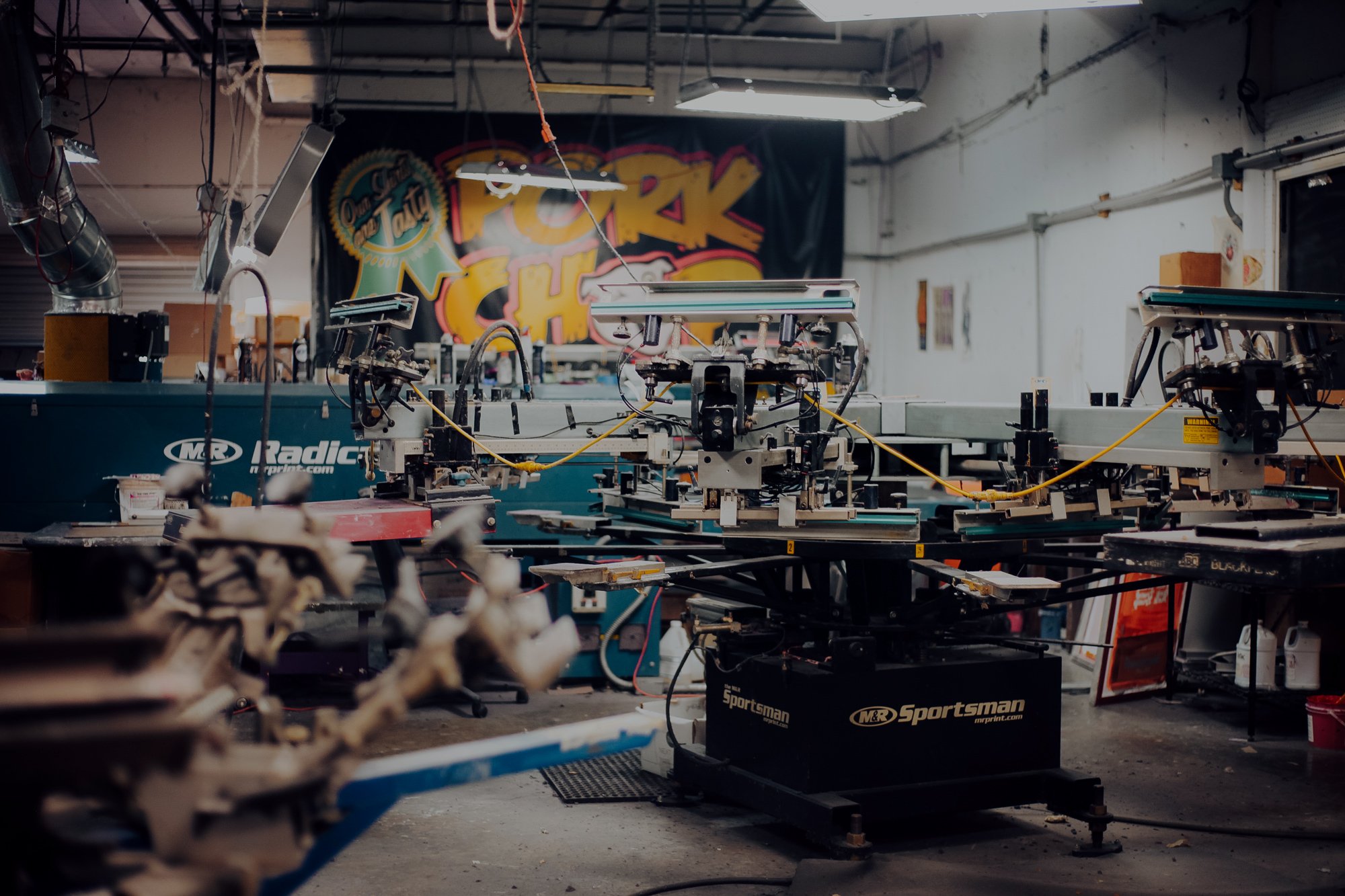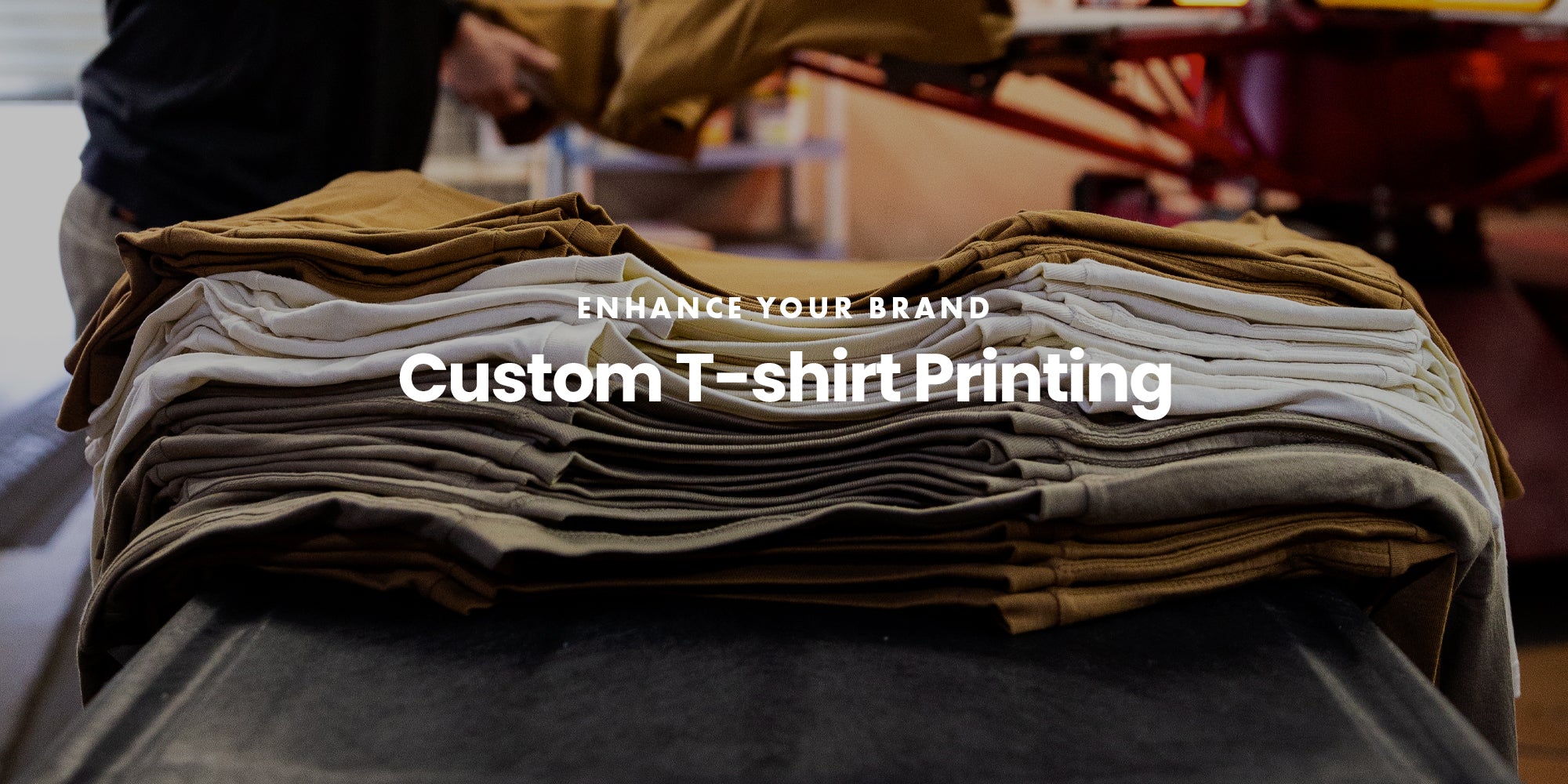Detailed Silk Screen Printing for Custom Art Apparel
Screen Printing Uncovered: Everything You Need to Learn About Tee and Garment Printing Methods
Screen printing is a remarkable approach that integrates art with method, offering countless possibilities for creativity. All set to check out the important components that make display publishing an art type?
The Basics of Display Printing: Exactly How It Functions
When you plunge right into screen printing, you'll uncover it's both a science and an art. At its core, display printing includes creating a stencil, or screen, that permits ink to pass through just in particular areas.
Position the screen over the material, then utilize a squeegee to press ink with the display onto the garment. Each step is vital, and understanding them will certainly boost your screen printing abilities, changing simple garments right into one-of-a-kind, expressive pieces.
Kinds of Screen Printing Techniques
When you understand the basics of screen printing, it's time to check out the various techniques that can boost your designs. One popular method is traditional display printing, where ink is pushed through a stenciled display.
An additional alternative is plastisol printing, known for its longevity and dazzling shades, making it a favorite for lots of brands. Experiment with halftone printing to develop gradient impacts and elaborate layouts.
Essential Devices for Screen Printing
To achieve sensational lead to screen printing, having the ideal tools is basic. First, you'll require a durable display printing structure, which holds the mesh that moves your style onto the garment. Next off, buy high-quality squeegees; these are crucial for applying ink equally across the display. You'll likewise need an excellent direct exposure system to create your displays, in addition to a washout cubicle for cleansing them after usage. A dependable heat resource, like a conveyor clothes dryer or heat press, is essential for treating your prints to guarantee long life. Don't forget a correct office, equipped with tables and storage space for your supplies. Finally, safety equipment, such as masks and gloves, will certainly keep you safe from chemicals and inks. With the right devices, you'll be well on your method to producing professional-quality prints.
Choosing the Right Inks and Products
When picking inks and products for screen printing, you require to think about the kind of ink that works best for your job. Think about material compatibility to assure your designs look last and wonderful long. Also, discover green ink options to make your printing process much more sustainable.
Kinds of Screen Inks
Choosing the best screen ink is crucial for attaining vivid, sturdy prints that meet your job's needs. There are a number of kinds of screen inks to check out. Plastisol ink is popular for its versatility and ease of use, offering outstanding shade opacity on dark fabrics. Water-based ink, on the other hand, offers a softer feeling and is eco-friendly, making it excellent for those seeking to reduce their ecological effect. Release inks eliminate dye from the textile, resulting in a soft, classic appearance yet call for particular handling. Lastly, specialty inks, such as metal or glow-in-the-dark, can add special impacts to your designs. Evaluate your project demands and pick the ink that lines up best with your preferred end result.

Material Compatibility Considerations
Comprehending fabric compatibility is crucial for accomplishing high-grade screen prints, particularly because different materials respond uniquely to numerous inks. When selecting inks, take into consideration the material type-- cotton, polyester, or blends. For cotton, water-based inks function well, offering soft qualities and breathability. Polyester, on the various other hand, typically calls for plastisol inks for much better attachment and lively shades. You may require to utilize a mix of both kinds if you're printing on blends. Constantly evaluate your inks on example fabric to assure they stick properly and preserve color stability. Furthermore, bear in mind that textile weight and appearance can influence the last result, so choosing the best ink and product combo is vital for your job's success.
Eco-Friendly Ink Options
Environmentally friendly inks are coming to be a popular selection for screen printers who wish to decrease their environmental effect while keeping top quality. When choosing inks, take into consideration water-based inks, which are much less damaging and much easier to tidy up compared to typical solvents. These inks bond well with fabrics, delivering dynamic outcomes without poisonous chemicals. You might also check out eco-solvent garment printing inks that utilize less unpredictable organic compounds (VOCs), making them a much safer choice for both your wellness and the earth.
Additionally, try to find inks made from renewable energies, such as soy or vegetable-based alternatives. By choosing the right inks and products, you'll not just develop magnificent layouts yet additionally add to a much more sustainable printing procedure. Make the switch, and your prints will mirror your dedication to the environment!
Preparing Your Style for Screen Printing

File Layout Demands
To assure your design looks vivid and sharp on textile, you'll require to pay close focus to submit style requirements for screen printing. Make sure your design has a transparent history to prevent unwanted white sides on your prints. Maintain shade settings in mind; CMYK is conventional for screen printing, so convert your RGB designs accordingly.
Color Separation Methods
Color separation is an important step in preparing your design for display printing, and mastering it can substantially enhance your print top quality. You'll require to damage your style right into private colors, as each color calls for a separate display during printing. Start by identifying all the shades in your style and produce layers each. You can use software like Adobe Photoshop or Illustrator to separate and separate colors efficiently. Be certain to conserve each layer as a different file, generally in a layout like TIFF or PSD. This precision not just guarantees exact shade representation yet additionally simplifies the printing process. By taking notice of shade separation, you'll achieve professional and lively lead to your screen-printed garments.
Resolution and Dimension
Attaining the very best outcomes in screen printing begins with assuring your design has the ideal resolution and dimension. Ideally, your artwork should go to the very least 300 DPI (dots per inch) for sharp, clear prints. If you utilize reduced resolution, your final item may look pixelated and unprofessional.
When it concerns dimension, take into consideration the dimensions of your print area. Design your artwork to match the final print dimension, preferably creating it in the real measurements you'll be publishing. By doing this, you'll stay clear of any type of unanticipated scaling concerns.
Constantly examine your layout in both vector and raster formats. Vector graphics can be scaled without losing quality, making them optimal for display printing. Preparing appropriately will guarantee your layout looks amazing on every garment!
Step-by-Step Display Printing Refine
Display printing is a dynamic process that allows you to create vivid layouts on different surface areas. To get started, you'll require a screen, solution, and your chosen ink. Prepare your display by cleansing it extensively. Next, apply the solution evenly and let it completely dry in a dark area. Once dry, expose your display to light with your design put on it, which will certainly solidify the emulsion where the light hits, developing a pattern - screen printing kit.
After cleaning out the unexposed solution, your display prepares. Establish it up on your printing surface area and straighten your garment under it. Put ink onto the display and utilize a squeegee to press the ink with the pattern onto the material. Raise the screen very carefully and allow the print dry. Treat the ink making use of warm to ensure durability. That's it! You have actually effectively display printed your layout.
Tips for Effective Display Printing Projects
While you're diving into your display printing tasks, keep in mind that prep work is key to success. Begin by collecting all your materials-- inks, garments, displays, and mops. A tidy work area assists avoid undesirable mistakes, so clean before you begin.
Following, validate your artwork is high-resolution and appropriately sized for your garment. Check your display for appropriate exposure and clean it thoroughly to avoid smudges. When blending your inks, comply with the supplier's standards to accomplish the best uniformity.
During printing, use even stress with your squeegee for consistent results. Do not rush; take your time to validate each print fulfills your criteria. After printing, allow your garments dry completely prior to handling or packaging them.
Finally, constantly maintain an example of your job for future reference. This method, you can evaluate your progress and boost your strategies in time. Delighted printing!

Often Asked Questions
How Long Does It Require To Establish a Screen Printing Task?
Setting up a screen printing work generally takes about half an hour to an hour. You'll prepare the screens, mix inks, and readjust journalism. The moment varies based on intricacy and experience, so remain arranged!
Can I Print on Different Material Types Making Use Of the Very Same Method?
Yes, you can print on various textile kinds using the same strategy, however you'll need to change your settings and inks. Some textiles take in ink in different ways, so trying out warranties the most effective results for each product.
What Are Typical Mistakes to Stay Clear Of in Display Printing?
When screen printing, avoid usual errors like using the incorrect ink, ignoring proper direct exposure times, or avoiding pre-press checks. Constantly check your setup and maintain tidy screens to ensure quality outcomes each time.
How Can I Appropriately Clean and Keep My Screen Printing Tools?
To correctly tidy and preserve your screen printing tools, you ought to on a regular basis wash screens with suitable solvents, inspect squeegees for wear, and ensure all devices are stored dry and dust-free. Uniformity enhances and avoids costly repairs efficiency.
Is Display Printing Ecologically Pleasant Compared to Other Approaches?
Screen printing can be much more eco-friendly than other approaches, especially if you utilize eco-conscious products and water-based inks. By picking sustainable materials and techniques, you decrease waste and minimize your effect on the planet.
Display Printing Uncovered: Everything You Need to Know Regarding Tee Shirt and Garment Printing Methods
At its core, display printing involves producing a stencil, or screen, that enables ink to pass with just in details areas. Position the screen over the fabric, then use a squeegee to push ink with the display onto the garment. One prominent approach is typical display printing, where ink is pressed via a stenciled display.When picking inks and products for display printing, you require to take right into account the kind of ink that functions ideal for your task.